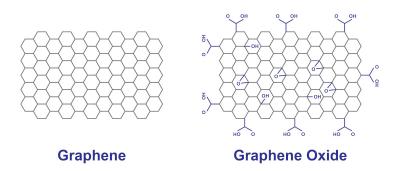Graphene Oxide: Introduction and Market News - Page 7
Metalgrass offers a discounted yearly market reports package
Metalgrass (Graphene-Info) is now offering a new subscription service for enterprises that want access to our complete collection of market reports.

For $3,500 per year, you will get an Enterprise License to all of our market reports. Metalgrass currently offers 12 market reports, plus 4 handbook guides, and all of these are included in the subscription (bought separately, these will cost over $10,000!). You will also have access to all new reports, updates and guides released in the future (during the yearly subscription period).
Our Enterprise License gives access to your entire organization: you can share the report with all the company employees via mail, shared server or any other digital way.
Graphene-Info updates all its graphene market report
Today we published new versions of all our graphene market reports. Graphene-Info provides comprehensive niche graphene market reports, and our reports cover everything you need to know about these niche markets. The reports are now updated to October 2021.
The Graphene Batteries Market Report:
- The advantages using graphene batteries
- The different ways graphene can be used in batteries
- Various types of graphene materials
- What's on the market today
- Detailed specifications of some graphene-enhanced anode material
- Personal contact details into most graphene developers
The report package provides a good introduction to the graphene battery - present and future. It includes a list of all graphene companies involved with batteries and gives detailed specifications of some graphene-enhanced anode materials and contact details into most graphene developers. Read more here!
Novel graphene fiber electrode could assist in developing advanced therapies in bioelectronic medicine
An international team that included researchers from the ARC Centre of Excellence for Electromaterials Science (ACES) and the University of Houston has helped progress electroceutical research for treatment of diseases including rheumatoid arthritis, colitis and sepsis.
 Coating steps of extruded Pt-rGO electrodes. Image from article
Coating steps of extruded Pt-rGO electrodes. Image from article
The team released their latest paper, that builds on previous studies where the team reported on the 'Sutrode' - a graphene based electrode created using the fabrication technique known as fiber wet spinning.
Researchers take a closer look at a mysterious graphene oxide phenomenon
A team of researchers at UNSW has observed a unique phenomenon in graphene oxide (GO). The oxygen atoms in GO are normally attached in a rather chaotic way. At elevated temperatures, however, the oxygen atoms form more organized structures by themselves. This process of ‘self-organization’ was found to drastically improve various properties of GO for example, its electrical conductivity.

For years, researchers have been aware that this phenomenon existed, but they could only demonstrate it using computational simulations. The new research, led by Dr. Rakesh Joshi at UNSW, successfully observed it for the first time in real life, using cutting-edge electron microscopy. While common microscopes use light to create a magnified image, electron microscopes use electrons. With this type of microscope, it is possible to observe single atoms, by magnifying what you’re looking at by a factor of 1,000,000.
G6 Materials reports positive test results on its GO-based air purifier tech
G6 Materials has announced the results of an antimicrobial efficacy test on a prototype of its proprietary graphene-based air purifier, conducted by a US-based microbiological laboratory of The Intertek Group. The test reportedly showed that the concentration of pathogenic microorganisms present in the testing chamber was reduced by 99.9% over the duration of the experiment.

Two different pathogens were randomly chosen to be tested under each experiment, which were the E. coli bacteria and the Phi-X174 bacteriophage. The duration of the test was set to two hours.
Recent research and industry news on graphene oxide
Graphene oxide (GO), a form of graphene that includes oxygen-containing groups, has been the focus of much talk and speculation lately - most of which centered around its potential use in medical contexts.

However, GO is an interesting material all on its own, with great potential for various other uses and applications. It is studied for use in areas like membranes for audio devices and water filtration, sensors, solar cells, batteries and more.
How concerned should we be about graphene's toxicity?
The potential toxicity of graphene and graphene oxide has been on people's minds lately. This is an area that has always received some attention, but recently there have been rumors and wild speculations about the adoption of graphene oxide and the risks involved.
Researchers have been studying the toxicity of graphene and graphene oxide for many years. While these materials have not yet been established as completely safe for use, there are quite a few research results that indicate that graphene can be relatively safe under the appropriate conditions.
Graphenea Foundry: a platform for the manufacture of graphene-based devices
This is a sponsored post by Graphenea
Graphenea’s Semiconductor catalogue spans from 1x1 cm2 single layer graphene films on a variety of substrates, to fully customized graphene-based device architectures implemented on wafers up to 150mm. The unique vertical integration that Graphenea offers, that covers the graphene growth, its transfer, its device fabrication and post-processing, allows Graphenea to have full control of the manufacturing process, continuously monitoring this through quality control processes and checkpoints.

Graphenea Foundry offers three products and services, which cover all the graphene needs one may have.
Graphene oxide barrier to protect electronics, artwork and solar cells
Curtin University researchers have recently shown that applying a thin (and of course, invisible) layer of graphene oxide to silicon forms an impermeable barrier, which could be used to protect artwork, prevent corrosion of metals, and produce higher efficiency solar cells.
Lead author, Dr. Nadim Darwish from Curtin’s School of Molecular Life Sciences, said while protective layers on silicon were already used as an efficiency enhancer in devices such as solar cells and microchips, the procedure for forming these protective coatings was complicated and required highly specialized fabrication laboratories.
Graphene oxide helps create reusable wrapper to increase shelf life of fruits
Indian scientists have developed a graphene oxide composite paper, loaded with preservatives, that can be used as wrappers to help extend the shelf-life of fruits, stated the Department of Science and Technology.
In the currently used technology, preservatives are adsorbed by the fruit, causing chronic toxicity. In the team's new paper, the wrapper releases the preservative only when needed. The wrapper can also be reused, which is not possible with the present technology.
Pagination
- Previous page
- Page 7
- Next page





